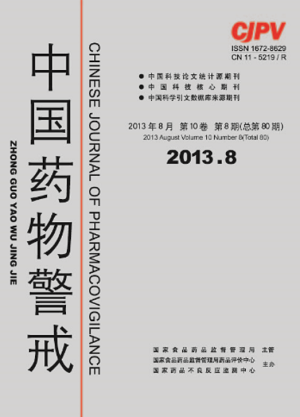|
|
Literature Analysis of 55 Cases of Adverse Drug Reaction by Glucoside Tripterygium Total
YIN Cheng-xia
2013, 10(8):
478-482.
Objective Through analysing 55 adverse drug reaction(ADR) cases of Glucoside Tripterygium Total(GTT), explore the rules and causes of ADR, providea reference for clinical rational use of drugs. Methods By searching literature in Chinese Journal Full-text Database from 1984 to 2013, 28 ADR literatures of Glucoside Tripterygium Total(GTT) involving 55 cases, were statistically analyzed. Results The involving disease types included 16 rheumatoid arthritis ( RA ) cases , 6 nephritis cases , 11 nephrotic syndrome cases , systemic lupus erythematosus ( sle ) cases ,2 oral squamous moss cases, 1 psoriasis case, 1 neurodermatitis case, 1 nodular regression febrile and non suppurative panniculitis case. The adverse reaction incidence of women was more than men, the 20~39 years old patients with the highest incidence; the appeared time of ADR was from 1 day to half one year; the adverse reactions involved many systems and organs, the blood system was the first, followed by the gastrointestinal system, reproductive system, etc. The most adverse reactions were slight, even if some symptoms were severe, through withdrawing the drugs timely or symptomatic drug treatment, the most symptoms could be improved and disappeared. Conclusion The doctors and pharmacists should pay attention to the adverse reactions caused by Glucoside Tripterygium Total(GTT). The dosages were strictly controlled according to the disease conditions. The routine blood, routine urine and hepatic function were detected before and during taking the medicine. The clinical care should be strengthened so as to prevent the occurrence of adverse reactions.
References |
Related Articles |
Metrics
|
